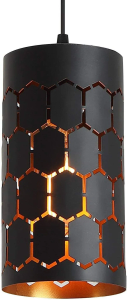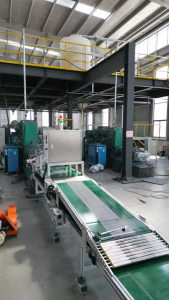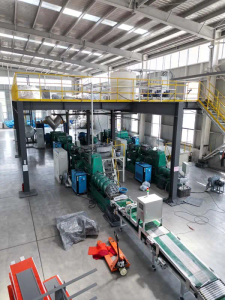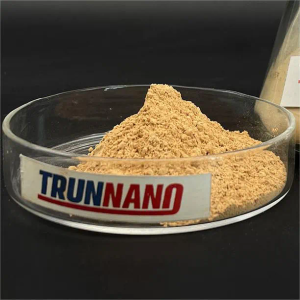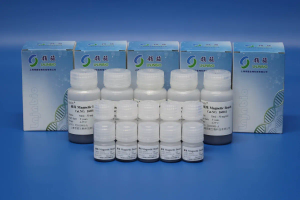Exploring the Properties and Uses of Spherical Molybdenum Powder in Industry
Spherical molybdenum powder is a material of significant interest in various industrial applications due to its unique properties and versatile uses. Molybdenum, a transition metal, is known for its high melting point, excellent thermal and electrical conductivity, and resistance to corrosion and wear. These characteristics make spherical molybdenum powder a valuable resource in industries ranging from aerospace to electronics. This article delves into the properties and uses of spherical molybdenum powder, offering a comprehensive overview of its industrial applications, production methods, and future prospects.
Properties of Spherical Molybdenum Powder
Spherical molybdenum powder is distinct from other forms of molybdenum powder due to its unique shape. The spherical form of the powder enhances its flowability and packing density, which is crucial for various applications. The following sections discuss the key properties of spherical molybdenum powder in detail.
High Melting Point
One of the most notable properties of molybdenum is its high melting point, which is around 2,623 degrees Celsius (4,753 degrees Fahrenheit). This high melting point makes spherical molybdenum powder ideal for applications that involve extreme temperatures. In high-temperature environments, such as those found in aerospace and industrial processes, the ability of molybdenum to maintain its structural integrity is invaluable.
Excellent Thermal and Electrical Conductivity
Molybdenum exhibits excellent thermal and electrical conductivity, which contributes to its effectiveness in heat dissipation and electrical applications. Spherical molybdenum powder’s high thermal conductivity ensures efficient heat transfer in electronic devices and components, reducing the risk of overheating and improving overall performance.
Resistance to Corrosion and Wear
Molybdenum’s resistance to corrosion and wear is another significant property. The spherical form of the powder enhances these characteristics, as the powder’s uniform shape helps to prevent uneven wear and degradation. This resistance is particularly beneficial in harsh environments where exposure to corrosive substances and abrasive conditions is common.
Mechanical Strength
The mechanical strength of spherical molybdenum powder contributes to its durability and reliability in various industrial applications. The powder’s ability to withstand mechanical stresses without deforming or breaking is crucial for maintaining the performance and longevity of components made from it.
Production Methods of Spherical Molybdenum Powder
The production of spherical molybdenum powder involves several advanced techniques designed to achieve the desired shape and properties. The following methods are commonly used to produce spherical molybdenum powder.
Atomization
Atomization is one of the most widely used methods for producing spherical molybdenum powder. This process involves melting molybdenum and then spraying it into a chamber where it rapidly cools and solidifies into spherical particles. The atomization process can be controlled to produce powders with specific size distributions and shapes.
Chemical Vapor Deposition (CVD)
Chemical vapor deposition is another method used to produce spherical molybdenum powder. In this process, molybdenum is deposited onto a substrate from a gas phase, where it reacts with other gases to form spherical particles. The CVD process allows for precise control over the particle size and distribution, resulting in high-quality spherical molybdenum powder.
Mechanical Milling
Mechanical milling is a method that involves grinding molybdenum in a ball mill to produce fine spherical powders. This process can be tailored to achieve the desired particle size and shape. Mechanical milling is often used in combination with other techniques to refine the properties of the powder.
Spheroidization
Spheroidization is a specialized process designed to convert irregularly shaped molybdenum particles into spherical ones. This technique involves heating the powder to a temperature where the particles begin to soften and then applying mechanical forces to shape them into spheres. Spheroidization improves the flowability and packing density of the powder, making it suitable for various applications.
Uses of Spherical Molybdenum Powder in Industry
Spherical molybdenum powder’s unique properties make it suitable for a wide range of industrial applications. The following sections explore some of the key uses of spherical molybdenum powder across different sectors.
Aerospace Industry
In the aerospace industry, spherical molybdenum powder is used in the manufacture of high-performance components that must withstand extreme temperatures and mechanical stresses. The powder’s high melting point and thermal conductivity make it ideal for use in rocket nozzles, jet engine components, and other critical parts. Molybdenum-based materials provide the necessary strength and durability for aerospace applications, ensuring reliable performance under challenging conditions.
Electronics Industry
Spherical molybdenum powder plays a crucial role in the electronics industry, where it is used in the production of heat sinks, electrical contacts, and other electronic components. The powder’s excellent thermal and electrical conductivity enhances the performance of electronic devices by improving heat dissipation and ensuring efficient electrical connections. Additionally, molybdenum’s resistance to wear and corrosion extends the lifespan of electronic components, making it a valuable material in this sector.
Energy Sector
In the energy sector, spherical molybdenum powder is utilized in the manufacture of components for nuclear reactors, gas turbines, and other energy-related equipment. The powder’s ability to withstand high temperatures and corrosive environments makes it suitable for use in demanding applications such as reactor cores and turbine blades. Molybdenum-based materials contribute to the efficiency and safety of energy production processes.
Powder Metallurgy
Spherical molybdenum powder is widely used in powder metallurgy, a technique for manufacturing metal parts from powders. The powder’s spherical shape improves its flowability and packing density, allowing for the production of high-quality metal components with uniform properties. In powder metallurgy, molybdenum powder is Spherical Vanadium Powder used to create parts with high strength, wear resistance, and thermal stability.
Medical Applications
In the medical field, spherical molybdenum powder is used in the production of various diagnostic and therapeutic devices. The powder’s biocompatibility and resistance to corrosion make it suitable for use in implants, surgical instruments, and other medical devices. Molybdenum-based materials contribute to the reliability and effectiveness of medical technologies.
Future Prospects and Research Directions
The future of spherical molybdenum powder holds exciting possibilities as research and development continue to advance. Emerging technologies and innovations are likely to expand the applications of spherical molybdenum powder and enhance its properties. Some potential areas of future research include:
Advanced Manufacturing Techniques
Ongoing research into advanced manufacturing techniques may lead to the development of new methods for producing spherical molybdenum powder with improved properties. Techniques such as additive manufacturing and advanced atomization processes could enable the production of powders with finer control over particle size and shape.
Enhanced Performance Materials
Future research may focus on enhancing the performance of molybdenum-based materials through the incorporation of other elements or compounds. By modifying the composition of spherical molybdenum powder, it may be possible to achieve even greater properties such as improved strength, thermal stability, or corrosion resistance.
Sustainable Production Practices
![]()
As industries increasingly prioritize sustainability, research into more environmentally friendly production practices for spherical molybdenum powder will likely gain importance. Developing methods that reduce energy consumption, minimize waste, and use sustainable materials will contribute to the overall sustainability of molybdenum powder production.
New Applications
Ongoing research may uncover new applications for spherical molybdenum powder in emerging technologies. As industries evolve and new fields of technology develop, the versatility of molybdenum powder may lead to novel uses and innovations across various sectors.
Conclusion
Spherical molybdenum powder is a material of immense value in modern industry, offering a range of properties that make it suitable for diverse applications. Its high melting point, excellent thermal and electrical conductivity, resistance to corrosion and wear, and mechanical strength contribute to its effectiveness in aerospace, electronics, energy, powder metallurgy, and medical applications. The production of spherical molybdenum powder involves advanced techniques such as atomization, chemical vapor deposition, mechanical milling, and spheroidization, each contributing to the powder’s unique characteristics.
As research and development continue to advance, the future of spherical molybdenum powder promises exciting possibilities, with potential improvements in manufacturing techniques, enhanced performance materials, sustainable production practices, and new applications. The ongoing exploration of spherical molybdenum powder’s properties and uses will undoubtedly lead to further innovations and contributions to various industries, underscoring its importance in modern technology and industry.
https://oaicon.com/
